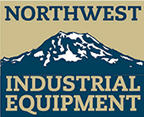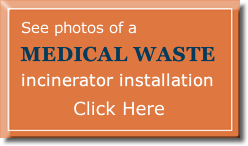Medical Waste Incineration for Developing Countries – Taking the Next Step
There has been a lot of negative press in recent years concerning the incineration of medical waste. Safe medical waste disposal is a concern in every country, but in developing countries this problem is often far more severe. Is the incineration of medical waste safe?
The question deserves more than just a simple yes or no answer. In 2002, the World Health Organization assessed that in 22 separate developing countries, the number of health-care facilities that did not practice proper waste disposal methods ranged from 18 to 64%. WHO estimates that injections with contaminated syringes caused 21 million cases of hepatitis B, two million cases of hepatitis C, and at least 260,000 HIV infections.
This is because contaminated injection equipment is often scavenged from medical waste dumpsites before being repackaged, sold, and reused. Health risks from improperly disposed hazardous waste pose serious occupational hazards to health workers and waste handlers alike.
For these reasons, developing countries have sought alternative means of waste disposal other than simply storing, burning, or burying. The appeal of incinerating medical waste becomes readily apparent, but then why has the process drawn criticism in recent years?
The Truth about the Health Risks Associated With Medical Waste Incineration
Much of the growing concern with medical waste incineration deals with potential exposure to harmful substances such as dioxins, furans, and other air pollutants that can be a product of emissions or contained in the ash that is left over when the process is complete.
These harmful chemicals are produced as by-products when wastes containing plastics, such as blood or fluid bags, are incinerated at temperatures lower than 800 degrees Celsius, according to WHO. These substances create the most problems for humans when they accumulate within the food chain and are ingested.
For these reasons, more developing countries are creating stricter guidelines for the burning of medical waste, including "red bag" waste, sharps waste, and hazardous Type 4 pathological waste such as Ebola virus and coronavirus.
What all of this means is that safe medical waste disposal can include incineration, but it is vital that the incinerator function at optimal levels. This can be accomplished through effective monitoring and maintenance of the system, proper disposal of ash, and accurate record keeping. These records will also be necessary to provide an inspector when health authorities conduct inspections of the incinerator.
Says WHO, "Optimization of the incineration process can reduce the formation of these substances by, for example, ensuring that incineration takes place only at temperatures above 800°C, and that flue gas temperatures in the range of 250°C to 450°C are avoided."
Medical Waste Incinerators Are the Next Logical Step for Many Countries
In South America, medical waste incinerators are making a difference. Clinics and hospitals that just a few years ago either buried or burned their medical waste are now utilizing the benefits of incinerators to help them take the next step toward better health.
"Incinerators provide an interim solution especially for developing countries…," says WHO, adding that best practice must be used to ensure the optimal operation of the of the incinerator system.
Other locations that are benefiting from medical waste incinerators include New Zealand, Australia, and Southeast Asia. Because modern incinerators are custom engineered, they can burn a variety of different fuels, are easy to operate, and can be cleaned and maintained by a person with no prior operational experience.
The most important step for a medical clinic or hospital interested in using an incinerator is to work with a reputable company that will configure an incinerator that meets their requirements. They should be able to conform to any country's laws by equipping the unit with regulators that monitor the unit's performance. They should also be willing to offer guidance in the proper care for the units that they sell.
There are other issues that must be addressed by any user of a medical waste incinerator. The most important of which are proper waste segregation and minimizing the risk of human exposure to harmful substances by siting the units away from heavily populated areas.
Proper waste segregation will ensure that only appropriate wastes are incinerated. Modern incinerators are designed to incinerate sharps waste, red bag waste, and Type 4 pathological waste.
While there is adequate reason for concern when it comes to the use of incinerators, the benefits for developing countries far outweigh the negatives when safety considerations are fully realized.
Contact us today to talk with an incineration specialist about your medical facilities' hazardous waste incineration needs. Within 60 days your new fully-compliant incinerator can be installed and in operation at your medical facility.

